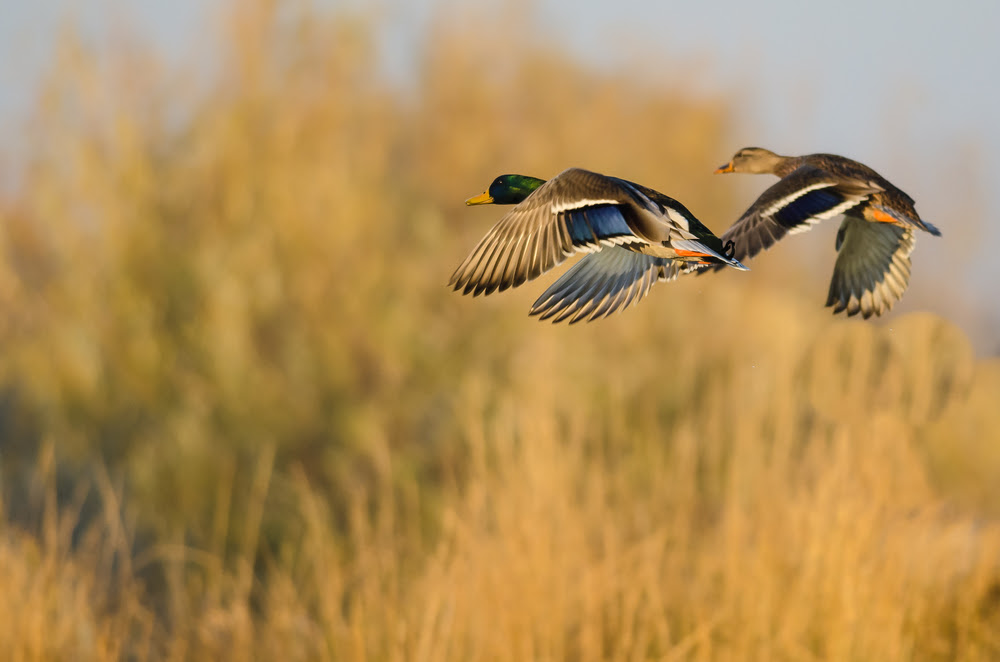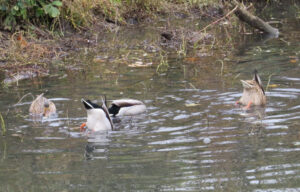Mallard, Anas platyrhynchos
Bill Rowe
The word “iconic,” though badly overused, fits well here: the Mallard is the iconic wild duck throughout the Northern Hemisphere, depicted everywhere in paintings, logos, photographs, and greeting cards; it is also the most abundant duck in North America and the source of most strains of domestic ducks. It is even a bit Christmas-y with its green head, red-brown chest and white neck ring (the male, that is). It belongs to a large subgroup known as the “dabbling ducks,” which get their food—small animal life, seeds of water plants—by dabbling their bills in the water or by “tipping up” (see photo below, left) rather than by diving. Within that subgroup, it has three especially close American relatives that differ from the Mallard in one key respect: while Mallards are strongly “dimorphic,” with the male strikingly different from the female, these other three look almost uniform, with both sexes simply a darker brown version of a female Mallard (they are the American Black Duck, Mottled Duck, and Mexican Duck). As with many ducks, there is a period in the summer when the male molts his wing feathers and becomes flightless for a while; at this time he wears a much plainer plumage, similar to the female’s, called his “eclipse” plumage. As fall progresses, he returns to his bold coloring.
IDENTIFICATION: Male Mallards are unmistakable, but the plain brown-speckled females can easily be confused with other female ducks. They have much white in the tail, an orange bill with a broad dark saddle across it, and a special wing pattern just like the male’s: an iridescent blue patch on the rear edge of the inner wing, called the “speculum,” bordered on both sides by bold white lines (see photo above). This identifies Mallards in flight even at a distance (see photo at bottom). The closely related American Black Duck, uncommon here, is a much darker brown on the body with a grayish head. Special note: Only female Mallards quack; males make a quieter sound.
ST. LOUIS STATUS: Some Mallards do spend the summer here, nesting in St. Louis-area ponds and marshes, even in parks and suburbs, but the large numbers arrive in fall from the north and may spend much of the winter here if they aren’t driven farther south by hard freezes. On major lakes and refuges, Mallard populations at their peak may reach the tens of thousands or more.
Learn more and listen to the calls of Mallards here.
Mallards dabbling and tipping up
Photo Credit: Bill Rowe
Female Mallard with
American Black Duck
Photo Credit: Al Smith






